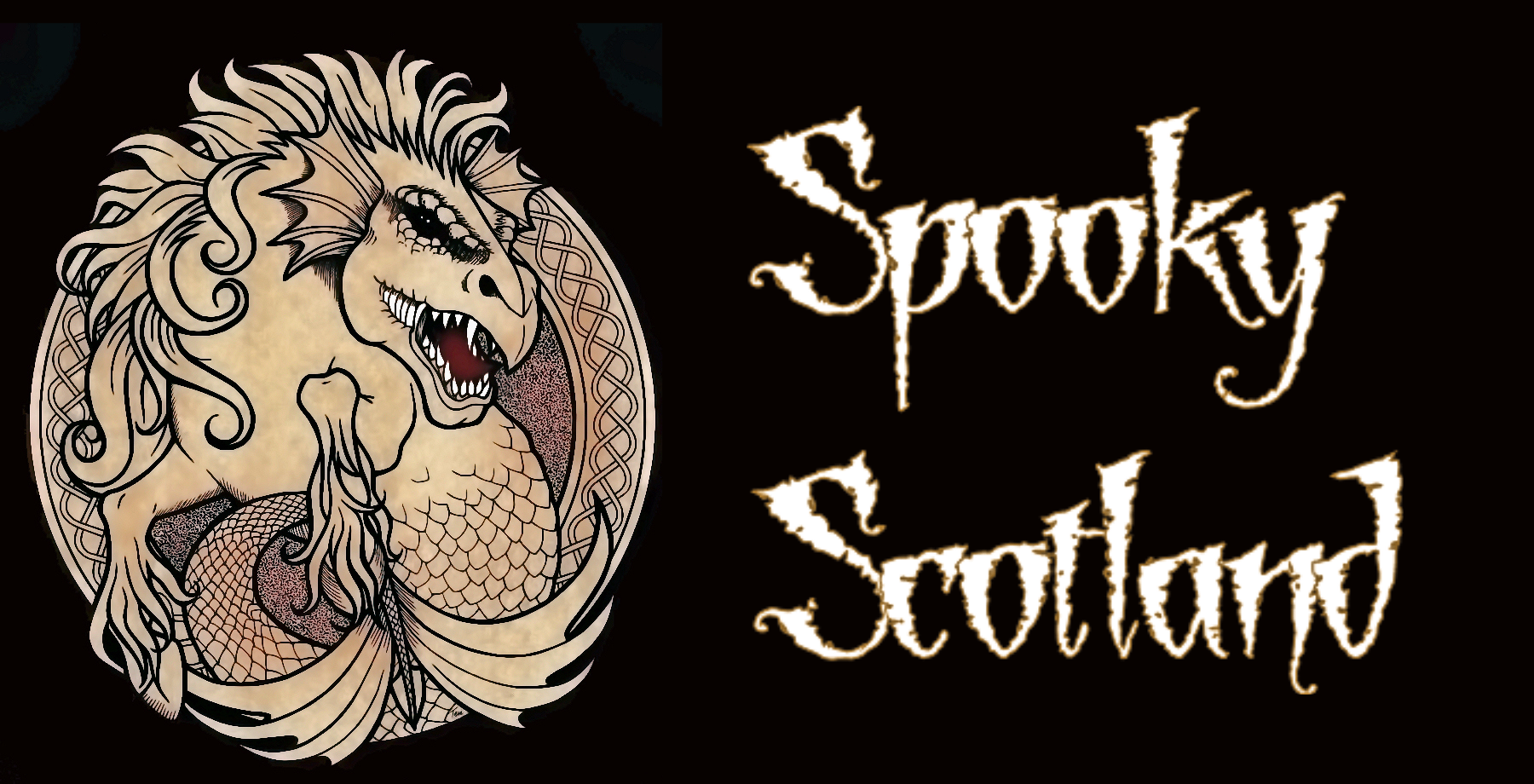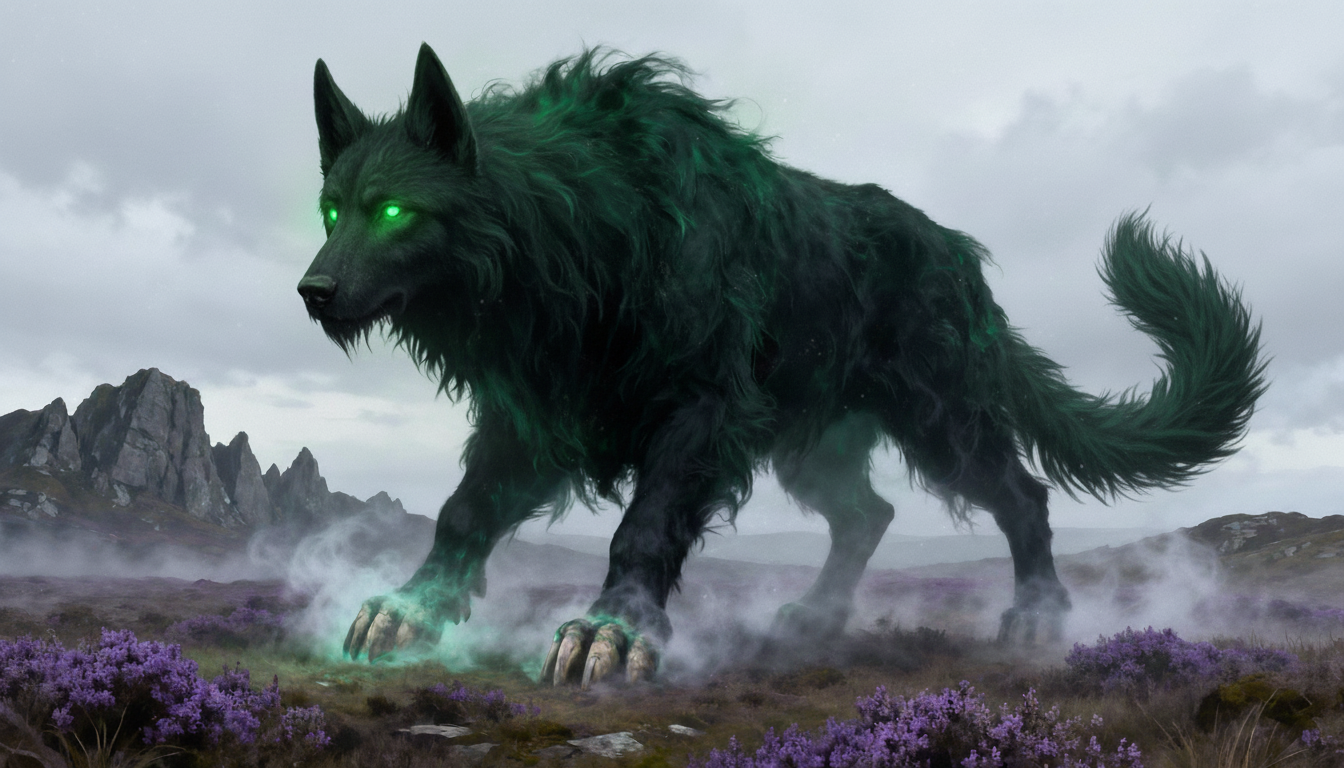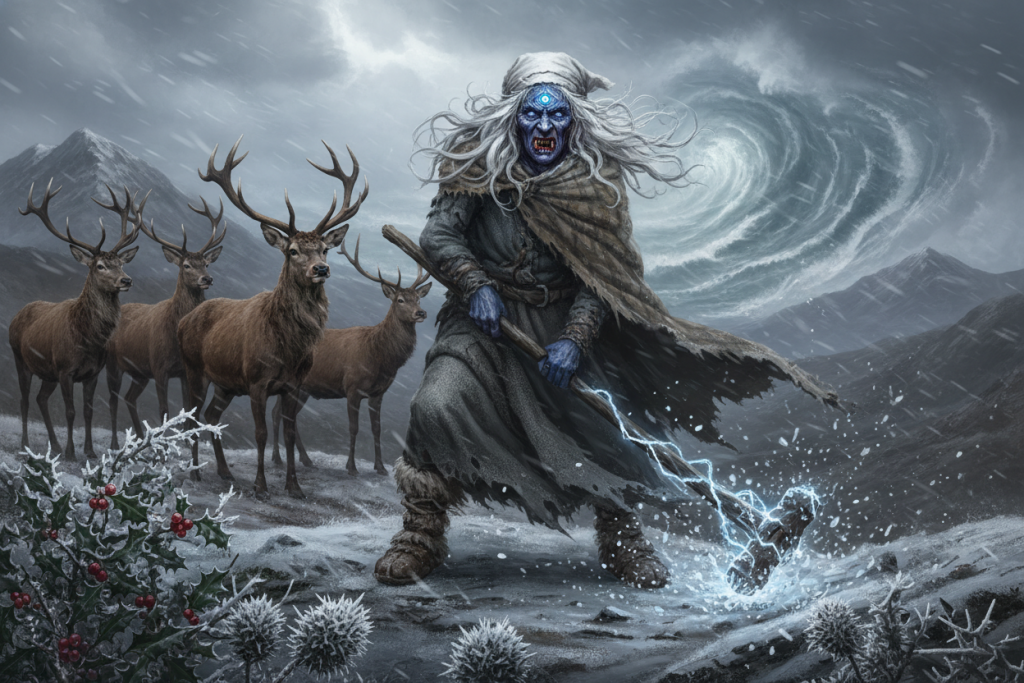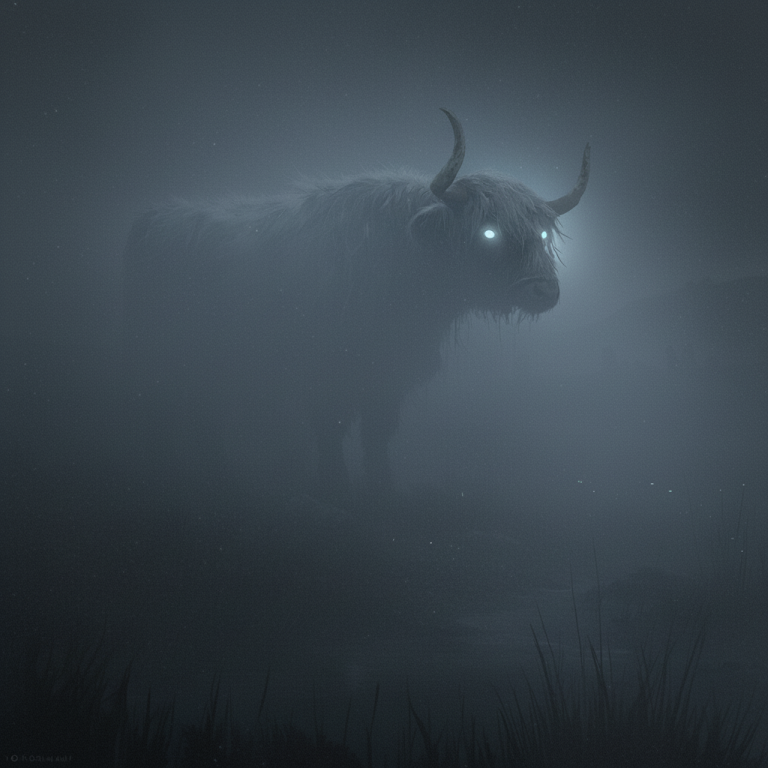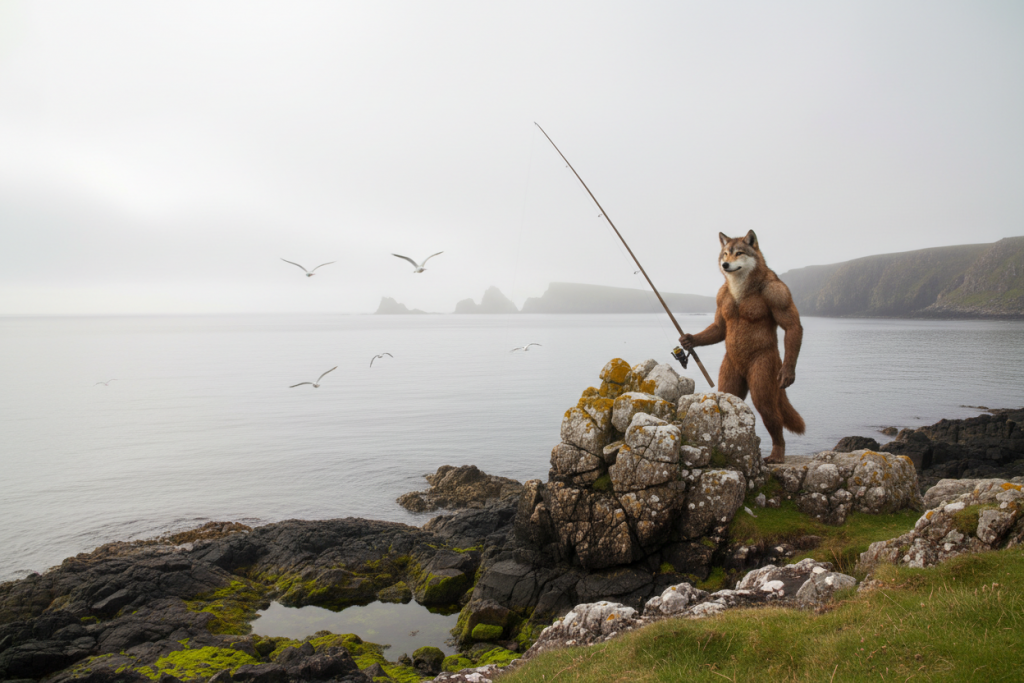Name pronunciation:
Cù Sìth (pronounced Koo Shee).
General Information:
The Cù Sìth means “fairy dog” and is a spectral hound from Scottish and Irish folklore, with some resemblance to the Welsh Cŵn Annwn. It is regarded as a creature of the fairy realm, often linked to omens of death, abduction by fairies, or the guiding of souls to the Otherworld.
Appearance:
The Cù Sìth is said to be the size of a small cow or young bull. It has a shaggy, dark green coat so dark it is almost black, a long curling or braided tail, fiery or glowing eyes, and paws as large as a man’s hand. Sometimes its ears are described as crimson red. Its prints are thought to be as large as dinner plates, sometimes left in sandy soil.
Habitat:
The hound is said to dwell in clefts of rocks and fairy mounds, roaming the Highlands’ moors and rocky hillsides. These places were believed to serve as gateways between the fairy realm and the human world. Reports and legends place it especially in the Western Isles and in areas like the Cairngorms.
Behaviour:
The Cù Sìth usually hunts in silence, despite its enormous size, but when it chooses to bark, it always does so three times. According to legend, those who hear the first bark must rush to safety because the second bark means time is almost out. When the third bark sounds, the hearer’s heart may stop from terror. Human dogs often reacted miserably in its presence, howling or pressing themselves to the ground in fear. The hound is believed to be both an omen of death and a collector of souls, though in some stories it helps or spares humans.
Shape-shifting Ability:
There are no consistent legends of the Cù Sìth changing shape itself, but as a creature of the fairy realm, it is linked with stories of fairies taking dogs or breeding unusual strains. Some tales tell of fairy dogs producing offspring with eyes that could see the wind, hinting at otherworldly traits.
Variant:
In Irish folklore it is known as the cú sídhe. In Scottish traditions, “fairy dogs” are reported in several regions, sometimes with blood-red ears or slightly different sizes. Welsh mythology also features supernatural hounds (Cŵn Annwn), suggesting parallels with Celtic myth. It may also be related to the black dogs of English Folklore.
Location in Scotland:
Fairy dogs appear most often in the Highlands, particularly the Cairngorms, the island of Tiree, and near Ruthven Castle. Loch Guinach and Loch Bhrodainn are also tied to legends of the fairy hound.
Stories/ Sightings or Experiences:
The stories of the Cù Sìth vary across Scotland, but they all carry a sense of dread and mystery.
The terror of three barks
Many Highlands folk believed the dog gave three barks that echoed for miles and that by the third your heart would stop with fright. Nursing women were locked away when its cries were heard, in fear that the hound would steal them into the fairy realm to nurse otherworldly children.
The woman of Tiree
On the island of Tiree, an old woman was gathering driftwood on the beach. She heard a strange bark but ignored it and continued with her basket. When a neighbour arrived she admitted she had already heard a second bark. The neighbour went pale at the realisation and pulled her home, dropping the basket where it was. If she had heard a third bark, her fate would have been sealed, but fortune spared her.
The shepherd and the fire-dog
A shepherd in the Cairngorms once heard scratching at his cottage door. Expecting his dog, he opened it to see a vast green hound with golden eyes and crimson ears. The beast entered calmly, lay by the fire, and drank water set out for it, though it refused food. When the shepherd’s own dog came inside, it pressed itself to the ground in terror. The Cù Sìth growled low, but shifted to allow the sheepdog to share the warmth. At dawn the hound left, pausing to lick the shepherd’s hand. That winter, when his own dog was lame, the shepherd struggled to gather his sheep in the snow. The Cù Sìth reappeared, but this time bounded over the drifts, rounding the flock and driving them to safety. Once again it licked his hand, then vanished into thin air.
The pack that saved the flock
Another account tells that when the same shepherd was close to despair, the Cù Sìth let out a strange bay. The moor erupted with fiery-eyed dogs, green-coated like their leader, who helped him dig sheep from the snow and herd them to shelter. In this tale, the fairy hounds showed kindness, proving not all encounters meant death.
Calum of Loch Guinach
A man called Calum, burdened with hunger and poverty, decided to drown himself. At the loch shore he met a woman of the fairies, who promised him fortune if he gave her the first thing to greet him when he returned home. Expecting a tethered lamb, he accepted — but his wife and excited children rushed out, and his dog sprang up first to lick his face. When the year passed, Calum gave the dog to the fairy, who later returned with the animal, offering Calum a pup as well. This puppy carried strange fairy traits, its descendants all having silver eyes. On the day of Calum’s death, the old dog returned and barked three times, then licked his hand one last time.
Brodainn of Ben Alder
Another legend tells of a crippled hound named Brodainn, left with a hunter by a demon. One day Brodainn chased the white fairy deer of Ben Alder into a loch, and both disappeared forever. The water became known as Loch Bhrodainn, preserving the memory of the lost fairy dog.
The hound of Ruthven Castle
Green fairy dogs were also said to roam near Ruthven Castle. They were feared as omens of death, and though their appearances were less frequent by the 20th century, they were spoken of as if they had been seen within living memory.
Purpose of the myth or Legend:
The Cù Sìth’s myth reinforced respect for the wild and lonely places of Scotland. The three barks explained sudden or unexplained deaths. Stories of children and nursing mothers tied into wider fairy myths about abduction. For shepherds and crofters, the Cù Sìth reflected both the hardships and the rare blessings of rural life. It is at once an omen of doom, a guide of souls, a guardian of fairy secrets, and occasionally a helper in times of need.
